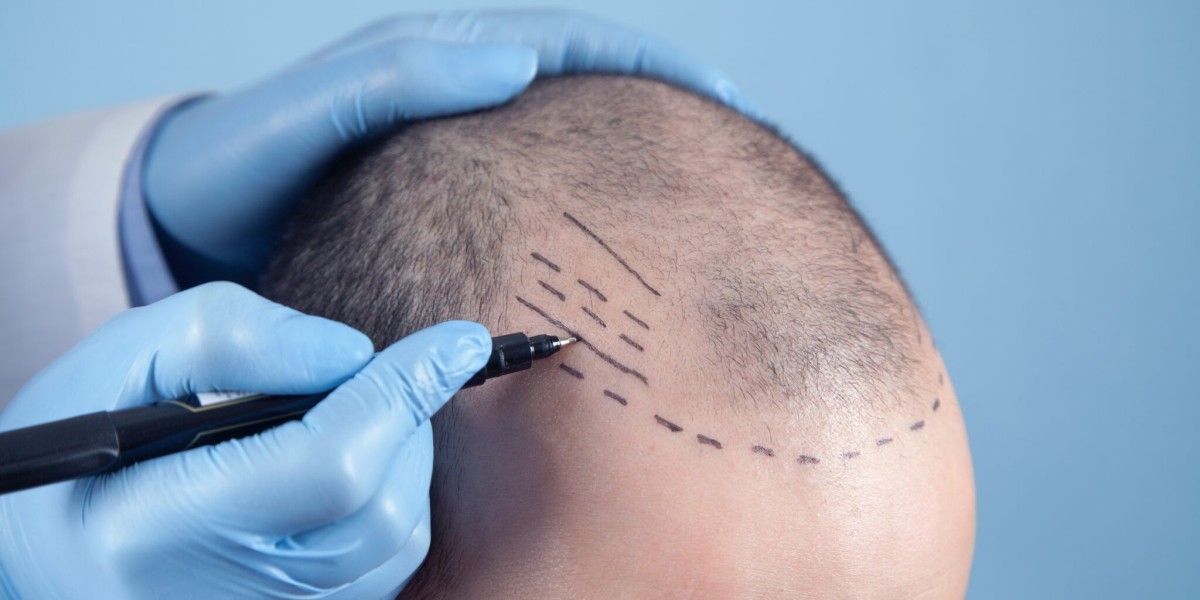Crown hair loss, also known as vertex baldness, is a common pattern of male and sometimes female hair thinning that can significantly affect one’s appearance. Unlike frontal hairline recession, the crown has a unique spiral pattern and requires a different strategic approach to graft placement for a successful transplant. If you're considering a Crown hair transplant in Islamabad, it's essential to understand how expert surgeons plan graft distribution to ensure natural, dense, and long-lasting results.
Understanding Crown Hair Loss
Hair loss in the crown area tends to occur in a circular or spiral manner. As a person ages, this area may expand and deepen, creating a "bald spot" that becomes more noticeable with time. The complexity of crown transplants lies in the directional growth pattern of the hair. Unlike straight-forward hairlines, the crown demands careful angling and a comprehensive distribution strategy.
Why Graft Distribution is Crucial
Graft distribution refers to how individual follicular units are transplanted across the recipient area. In crown transplants, precise graft distribution ensures that:
Hair appears natural and follows the native spiral pattern.
There is optimal density without overharvesting the donor area.
The results age well and blend seamlessly with surrounding hair.
Planning graft distribution poorly can lead to patchy, unnatural outcomes, or even a waste of precious donor grafts.
Step-by-Step Planning of Graft Distribution in the Crown
1. Assessing the Degree of Baldness
The first step in planning is to evaluate the extent of hair loss in the crown. Surgeons use tools like the Norwood Scale to determine whether the bald spot is in early or advanced stages. The severity will influence how many grafts are needed and how they are allocated.
2. Understanding the Natural Hair Pattern
Every person has a unique hair whorl or swirl in the crown region. Surgeons study the existing hair growth pattern—even if hair is thinning—to replicate it during the transplant. This involves mapping the direction and angles of hair follicles to create a realistic crown swirl.
3. Determining Graft Requirements
The number of grafts required depends on:
The size of the bald area.
Desired density.
Quality of the donor area.
Typically, crown transplants may require anywhere from 800 to 2,500 grafts. However, surgeons plan for realistic outcomes—ensuring that density looks natural rather than overly thick, which may look artificial or stress the donor area.
4. Zone-Based Planning
To ensure precision, surgeons divide the crown into zones:
Central Core (Swirl Center): This is the focal point of the spiral pattern. Finer, single-hair grafts are often used here to mimic natural softness.
Surrounding Area: As you move away from the center, multiple-hair grafts (2 or 3 hairs) may be used to increase density and coverage.
Perimeter or Transition Zone: This area requires careful blending with existing hair. Surgeons reduce density gradually for a seamless transition.
5. Donor Area Evaluation and Management
The donor area—typically the back and sides of the scalp—must be assessed for hair quality, density, and volume. Since grafts are limited, surgeons must plan distribution to make the best use of available follicles without over-harvesting, which can leave visible thinning in the donor region.
6. Designing the Angle and Direction
Crown hair doesn’t grow straight. It emerges at various angles and curves in a spiral. Surgeons use magnified images, hair mapping, and even custom tools to replicate the natural angles of hair growth. This level of detail ensures that the transplant looks indistinguishable from natural hair.
7. Prioritizing for Future Hair Loss
Since hair loss is often progressive, surgeons avoid placing all grafts in a small area. Instead, they anticipate future thinning and leave room for future treatments or touch-ups. This forward-thinking approach prevents awkward gaps or unnatural islands of hair later in life.
8. Considering Patient Preferences and Expectations
Every patient has a vision of what they want. Some prefer maximum coverage, while others are more concerned about a natural appearance. During consultation, the surgeon aligns graft distribution plans with the patient’s expectations while ensuring medical and aesthetic feasibility.
Techniques That Enhance Graft Distribution
Follicular Unit Extraction (FUE)
FUE allows surgeons to extract individual grafts and place them precisely, making it ideal for crown transplants that require attention to angle and direction. The ability to select finer or thicker grafts is especially useful in crown zone design.
Follicular Unit Transplantation (FUT)
FUT, also known as the strip method, yields a higher number of grafts in a single session. While less flexible in graft selection, it can be useful for larger crown areas. However, it may leave a linear scar in the donor area.
Surgeons sometimes combine FUE and FUT techniques for optimal results in crown transplant cases.
Post-Transplant Considerations
Even the best-planned graft distribution can be affected by post-operative care. Surgeons provide guidance on:
How to wash and care for the transplanted area.
What to avoid (e.g., scratching, wearing hats, intense workouts).
When to expect shedding and regrowth phases.
Medications or supplements to support growth.
By following these instructions, patients can protect the strategic graft placement and ensure healthy hair growth.
Results Timeline
Crown transplant results are not immediate. Typically:
Shedding begins within 2–3 weeks post-surgery.
New hair starts growing around 3–4 months.
Full visible results appear by 10–12 months.
The crown area, due to lower blood supply compared to the front of the scalp, can take slightly longer to show final results. Patience is key.
Conclusion
Graft distribution is the cornerstone of a successful crown hair transplant. Expert surgeons in Islamabad go beyond simply filling in bald areas—they design personalized treatment plans that respect the crown’s unique swirl pattern, anticipate future loss, and optimize graft usage for lifelong results. If you’re considering a Crown hair transplant in Islamabad, it’s vital to choose a clinic that specializes in customized, detailed graft distribution strategies.
For those looking for top-tier expertise and advanced hair restoration techniques, Dynamic Clinic in Islamabad offers tailored crown transplant procedures with exceptional outcomes. Consult their professionals to learn more about your options and start your journey to fuller, natural-looking hair.






